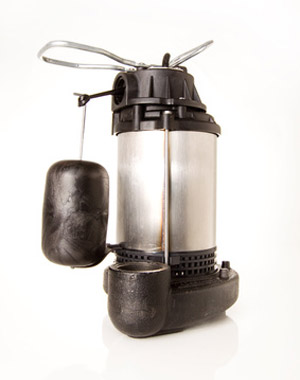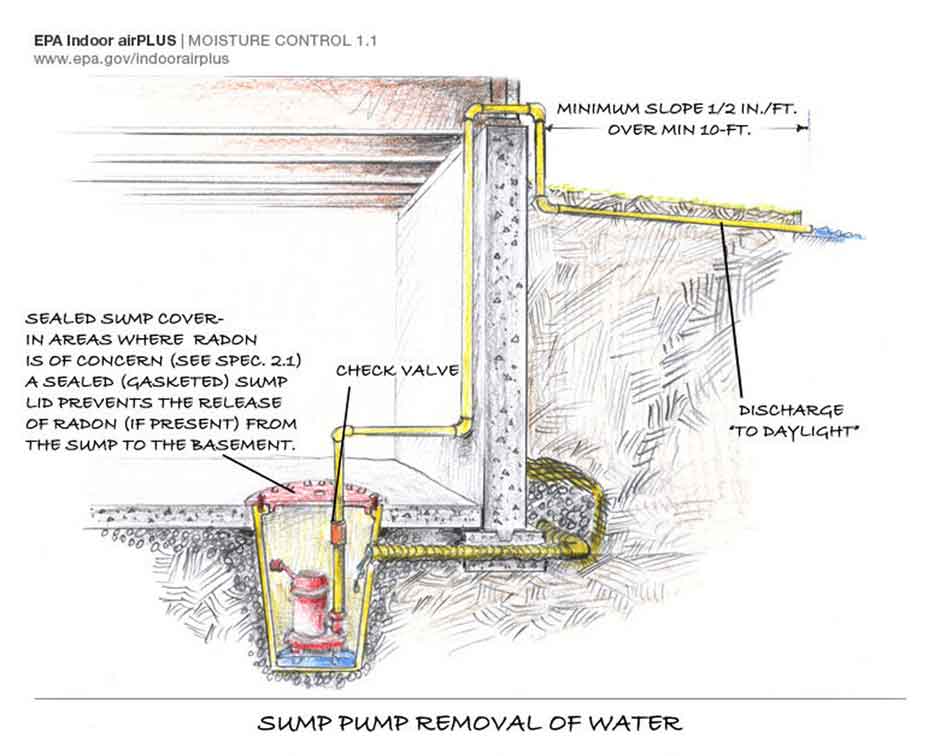
A sump is a pit, trench or low spot that collects water because of its low level. A sump pump is a pump placed in a sump in order to mechanically suck fluids from the water collection spot and direct the water away from where it is causing problems.
A sump pump permanently installed in a basement or crawl space of a building will help prevent flooding and moisture damage. In conjunction with a properly designed sump pump system, a home should have a good drainage system causing all run off water to drain away from any structure. Most homes with basements or crawl spaces will have water problems at one time or another and sump pumps are considered the primary method of protecting the home from water damage and flooding.
Many homes with a basement have sump pumps and if they don't, they often wish they had. Water-proofing basements and crawl spaces is big business. The installation of sump pits and sump pumps are an important component of all basement water-proofing jobs. One day, maybe soon, the water will most certainly come and water-proofing a basement cannot be considered complete without the installation of a permanent submersible sump pump.
These installations are also common in outdoor areas such as patios or cabanas where there is heavy use and property vulnerable to water damage. Most basements store items of value that need to be protected and often basements are additional living areas of homes. Additionally, basements are used as shelters for tornado prone areas and must be kept habitable. The intrusion of water and resulting moisture damage due to the lack of a sump pump causes problems that are expensive to repair. Health problems resulting from mold and mildew are also a serious consideration and will eventually affect the entire living area of the home.
A submersible sump pump is installed in a basin at the lowest portion of a basement or crawl space as a permanent improvement. During construction, formed and perforated basins are set into pits that are lined with a fabric that prevents intrusion of earth and debris which could clog the pump but still permits the entry of water.

The basins are perforated to permit water due to high water tables to flow into the basin. The pump is placed in the basin and will automatically turn on and start pumping when water reaches a certain level. The automatic on and off capability of the pump is similar to the float in a toilet, except that when the float is up because the water level is high, the pump turns on.
A toilet tank turns off when the float is high. Since power failures frequently accompany rainstorms, a back-up power system is installed in the form of a battery designed especially for the power needs of a sump pump which is a lower voltage and longer lasting power source than a battery for an automobile. A hose or pipe is connected to the pump for the water to drain to the outside drainage system.
Sump pumps are powerful enough to support up to a 10 foot drainage pipe. It is not recommended to drain water pumped by the sump pump into the municipal sewage system which means that water should not be drained to a laundry tub or shower pan. Most municipalities actually have laws against storm water being directed to sewer systems because systems would be quickly overwhelmed during storms.
For homes in areas with higher flood risk, a backup sump pump may be a good idea. A backup pump is powered by battery and designed to turn on if the main pump doesn't operate or there is a power failure. Backup pumps are also popular for people who are away from home for longer periods of time. Some sump pumps are purchased with a backup system included.
Although a sump pump is a simple and relatively inexpensive improvement for any home, proper installation is critical. Before you buy a sump pump, you may want to read some reviews and look for the higher quality and most recommended sump pump systems. Sump pump installation may vary somewhat depending on the sump pump system itself as well as the layout of the area you are trying to keep dry.
If your sump pump comes with instructions, be sure to follow them exactly if you want to attempt the installation yourself. Improper engineering of a sump pump installation could render the pump ineffective or even dangerous. It is recommended that an experienced professional perform the installation of any sump pump.
Licensed plumbers are experts in the installation and operation of sump pumps and the work is almost always guaranteed. A professional installation of a quality sump pump system would add value to any home with a basement.